This article was co-authored by Shira Tsvi. Shira Tsvi is a Personal Trainer and Fitness Instructor with over 7 years of personal training experience and over 2 years leading a group training department. Shira is certified by the National College of Exercise Professionals and the Orde Wingate Institute for Physical Education and Sports in Israel. Her practice is based in the San Francisco Bay Area.
There are 11 references cited in this article, which can be found at the bottom of the page.
This article has been viewed 489,387 times.
Learning how to breathe properly while running can help you run faster and longer with less effort, and prevent you from getting painful side-aches and stitches during your workout. Read this article to learn how.
Steps
Learn How to Breathe Properly
-
1Breathe with your diaphragm. The diaphragm is a muscle that sits like an upside-down bowl just beneath your ribs, contracting and relaxing to move air through your lungs. Deep "belly breathing" that visibly moves your abdomen in and out helps strengthen this muscle and improve your endurance.[1] If your belly stays flat and your chest pumps up and down, you're taking shallow "chest breaths," and will fatigue sooner.[2]
-
2Take longer breaths. This will help ensure that you are getting enough oxygen to your body, and is the best way to prevent muscle and lung fatigue. It also helps increase endurance by getting proper oxygen circulation to your muscles.[3]Advertisement
-
3Keep your mouth open. Your mouth is wider than your nostrils, allowing you to take deeper breaths of air.[4] Allow air to enter through both your mouth and your nose.
-
4Find a breathing pattern. Most experienced runners coordinate their breath with their steps, such as the popular "inhale for three steps, exhale for two" (or simply "3–2"). This helps you breathe more consistently. You may also be forced to switch to a different pattern (such as "2–1") at higher speeds, which helps you keep track of the intensity of your run.[5]
- There are several popular alternatives to these patterns, such as "2-2" or "2-3." Experiment with different breathing patterns to find the right one for you.[6]
-
5Use the "talk test" to determine if you are breathing enough. You should be able to form full sentences while running without huffing and puffing.[7]
Improve Lung Function Over Time
-
1Run or jog regularly. Running, just like any other physical activity, improves with practice. The better shape you are in aerobically, the easier it will be for you to breathe efficiently.[8]
-
2Do breathing exercises. Remember that just as we work to strengthen our muscles and hearts, we must also work to strengthen our lungs.[9]
- Practice taking deep breaths from your diaphragm while sitting still or lying on your back. Put your hand on your abdomen to make sure it moves up and down with each breath. Count to 8 for each inhale and exhale. Repeat for 3-5 minutes.
- Swimming regularly can also improve lung function over time, because the exercise places an emphasis on breathing. It will also help you learn how to pace your breathing, because you must learn to coordinate your breath with the strokes you take.
-
3Don't smoke. Smoking causes damage to your lungs, making it much more difficult for you to take deep breaths while running.[10]
Expert Q&A
-
QuestionIs it better to breathe through your nose or mouth when running?
 Shira TsviShira Tsvi is a Personal Trainer and Fitness Instructor with over 7 years of personal training experience and over 2 years leading a group training department. Shira is certified by the National College of Exercise Professionals and the Orde Wingate Institute for Physical Education and Sports in Israel. Her practice is based in the San Francisco Bay Area.
Shira TsviShira Tsvi is a Personal Trainer and Fitness Instructor with over 7 years of personal training experience and over 2 years leading a group training department. Shira is certified by the National College of Exercise Professionals and the Orde Wingate Institute for Physical Education and Sports in Israel. Her practice is based in the San Francisco Bay Area.
Personal Trainer & Fitness Instructor Both! You should inhale through your nose and exhale through your mouth. Make sure that when you're inhaling that you're breathing from your diaphragm. Your stomach should inflate a little bit when you inhale. This will keep your shoulders from coming up and ensure that you're maintaining the proper posture while you run.
Both! You should inhale through your nose and exhale through your mouth. Make sure that when you're inhaling that you're breathing from your diaphragm. Your stomach should inflate a little bit when you inhale. This will keep your shoulders from coming up and ensure that you're maintaining the proper posture while you run. -
QuestionHow do I breathe when running?
 Michele DolanMichele Dolan is a BCRPA certified Personal Trainer in British Columbia. She has been a personal trainer and fitness instructor since 2002.
Michele DolanMichele Dolan is a BCRPA certified Personal Trainer in British Columbia. She has been a personal trainer and fitness instructor since 2002.
Certified Fitness Trainer There are a few different ideas on what is the best way to breathe while running. What ends up working best for you is your own best method. Having said that, try inhaling for two steps and exhaling for two or three steps, and repeat that pattern. If you use the three-step exhale, you will end up alternating the foot you land on with each breath, which some believe is best.
There are a few different ideas on what is the best way to breathe while running. What ends up working best for you is your own best method. Having said that, try inhaling for two steps and exhaling for two or three steps, and repeat that pattern. If you use the three-step exhale, you will end up alternating the foot you land on with each breath, which some believe is best. -
QuestionHow can I improve my breathing while running?
 Michele DolanMichele Dolan is a BCRPA certified Personal Trainer in British Columbia. She has been a personal trainer and fitness instructor since 2002.
Michele DolanMichele Dolan is a BCRPA certified Personal Trainer in British Columbia. She has been a personal trainer and fitness instructor since 2002.
Certified Fitness Trainer Experiment with nose/mouth breathing. Try the 2 footfalls inhale, 3 footfalls exhale. Find out what feels the most natural and efficient for you, mixing up the variables. Most experts advise mouth breathing and 2 footfalls on the inhale, 2 footfalls on the exhale, when you are tired.
Experiment with nose/mouth breathing. Try the 2 footfalls inhale, 3 footfalls exhale. Find out what feels the most natural and efficient for you, mixing up the variables. Most experts advise mouth breathing and 2 footfalls on the inhale, 2 footfalls on the exhale, when you are tired.
References
- ↑ https://my.clevelandclinic.org/health/articles/9445-diaphragmatic-breathing
- ↑ Shira Tsvi. Personal Trainer & Fitness Instructor. Expert Interview. 7 January 2020.
- ↑ https://www.lung.org/blog/breathing-basics-for-runners
- ↑ https://health.clevelandclinic.org/breathe-mouth-nose/
- ↑ https://sites.udel.edu/coe-engex/2017/04/09/breathe-in-breathe-out-breathing-during-exercise/
- ↑ https://www.lung.org/blog/breathing-basics-for-runners
- ↑ https://www.cdc.gov/physicalactivity/basics/measuring/index.html
- ↑ https://www.lung.org/lung-health-diseases/wellness/exercise-and-lung-health
- ↑ https://www.lung.org/lung-health-diseases/wellness/breathing-exercises
About This Article
To breathe while running, coordinate your breath with your steps, which helps you breathe more consistently. Try inhaling for 3 steps then exhaling for 2, for example, or use another pattern that matches the intensity of your run. Keep your mouth open so you’re getting air through both your nose and mouth. You can also try to take longer breaths, which will give your body more oxygen. Finally, focus on using deep “belly breathing” by making sure your abdomen, rather than your chest, is moving, which will give you more endurance. For information from our Personal Trainer reviewer on improving your lung function over time, keep reading!






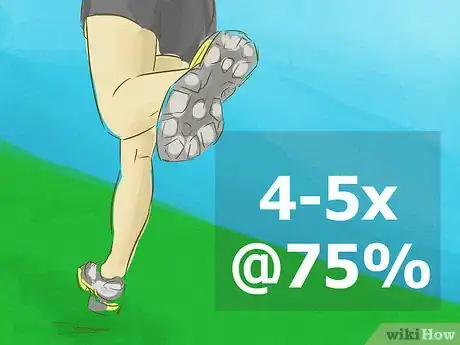


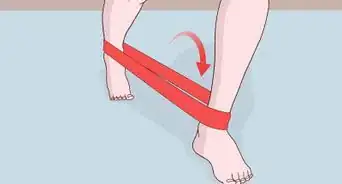
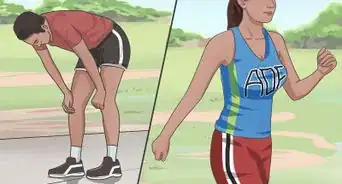




















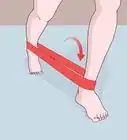
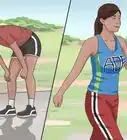





































Medical Disclaimer
The content of this article is not intended to be a substitute for professional medical advice, examination, diagnosis, or treatment. You should always contact your doctor or other qualified healthcare professional before starting, changing, or stopping any kind of health treatment.
Read More...